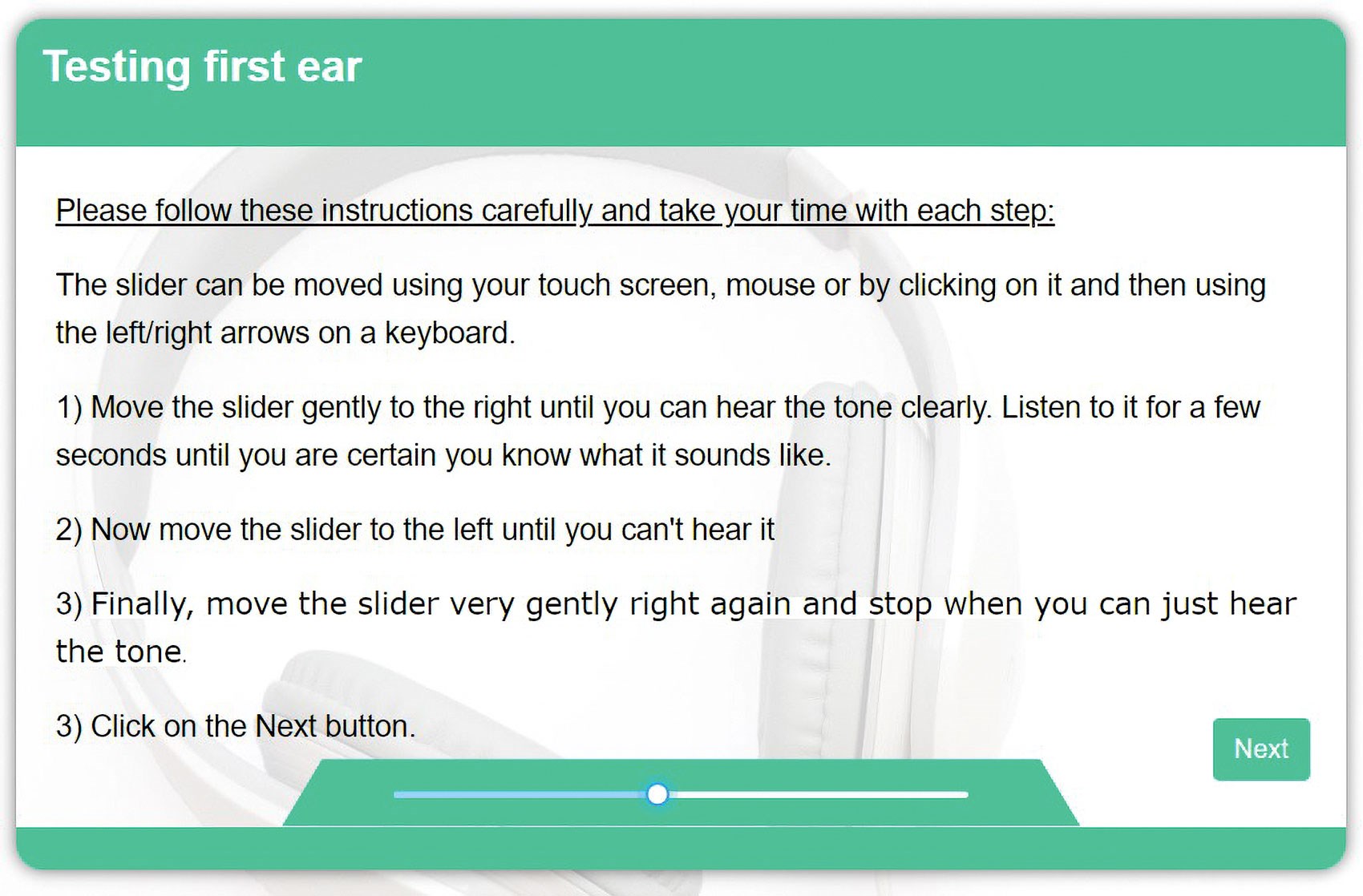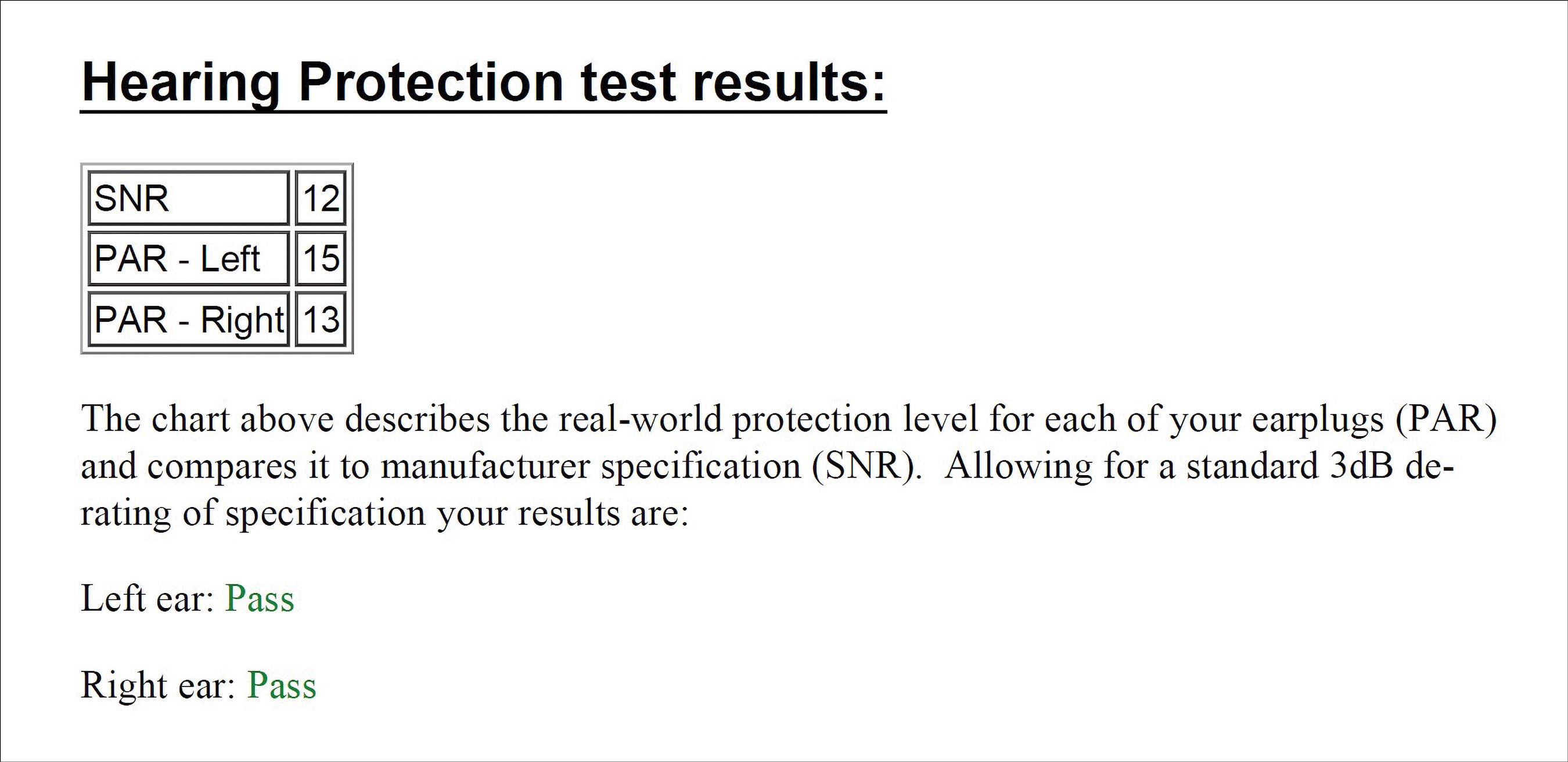As an audiologist, it can be difficult to confirm the proper fit of earplugs. Although we can use sound field testing to assess the attenuation of the earplugs, this is not equipment that every audiology clinic has. Unfortunately, without proper testing, the patient is at risk of noise exposure if the fit is not as predicted.
A few common issues with earplug fit include user error, earmould material degradation, and ear canal texture changing over time. How can we guarantee that the initial fit is accurate as well as confirm that the earplugs are still functioning optimally in a few years? The answer is Earplugtest.co.uk
The Earplugtest is the world’s first online earplug test and can be done in the comfort of one’s home. The only requirements are over-the-ear headphones, earplugs, a computer and an internet connection. For a small fee (£4.95) and 10 minutes of time, the consumer gets a report and a pass or fail grade for their earplugs.

Figure 1: Test instructions.

Figure 2: Example of report.
The test consists of a few questions at the beginning, including the signal-to-noise (SNR) ratio of the earplugs, and then the consumer calibrates their headphones to their computer to ensure that they are at the proper loudness for testing. Once the set-up is complete, the consumer listens to one pure tone in the first ear and, using a slider, moves the slider so that the pure tone is just audible. This continues until the consumer has completed six different pure tones per ear.
Next, the consumer is asked to insert the earplugs under the headphones and perform the test again. At the end, a report is produced that outlines the protection level of each plug. This generates a pass/fail grade by comparing the expected specifications with the real-world fit. The report also comes with some useful information which can be accessed any time the consumer logs in to their account.
"The main advantages of Earplugtest is that it is versatile and can be done very easily and very cheaply anywhere there is a computer"
One disadvantage of Earplugtest is that the consumer must have over-the-ear headphones. The second disadvantage is that the consumer must know the expected SNR from their earplugs. If not, then the test assumes an SNR 12 which is the lowest attenuation rating. This means that earplugs will easily pass the test, leading to potential problems with consumers thinking that their earplugs are good when, in fact, they are in a noisy environment that requires a much higher SNR.
The main advantages of Earplugtest is that it is versatile and can be done very easily and very cheaply anywhere there is a computer. In audiology clinics, workplaces, homes, etc. users can confirm the fit of both custom and non-custom noise plugs. Earplugtest can also be used as a tool in audiology clinics to counsel patients on proper insertion as patients see real-time whether or not their fit is pass/fail. In summary, with the use of Earplugtest, consumers can rest assured that their plugs are fitting optimally.





